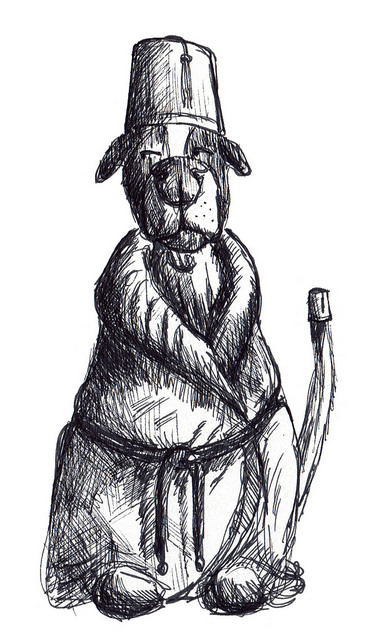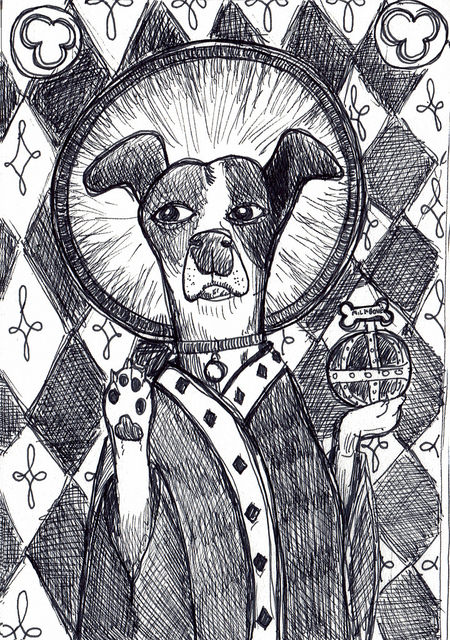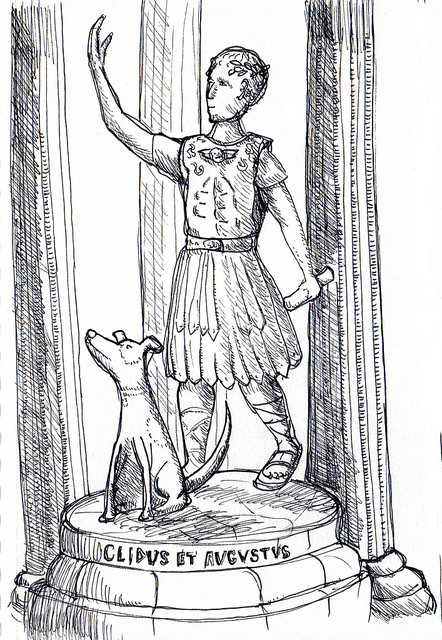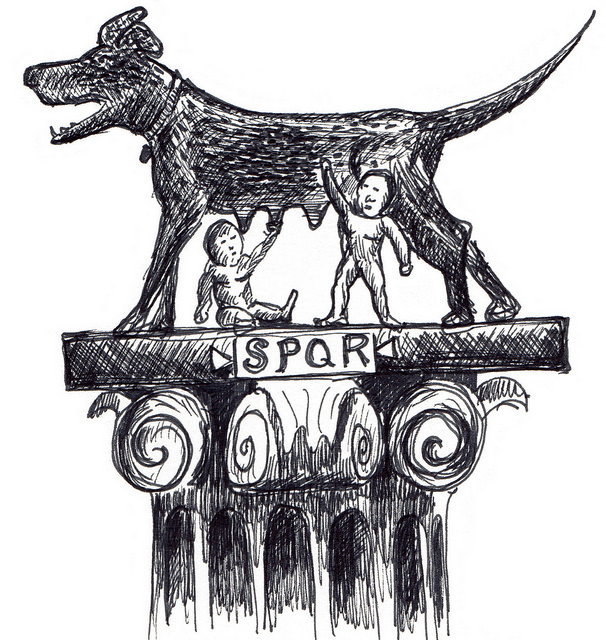One Sunday morning, I was doodling and having coffee with my girlfriend. My muse arrived on the ears of her pitbull-pointer mix, Clyde, begging at my side. I began a dialogue with Clyde. I asked the questions and I provided the voice-over (which is said to sound like Julia Child). Truly, such a noble hound has a long and storied pedigree. And here is what came out of our conversation:
Clyde D. Rockefeller
Early 20th century America was a place for a hungry hound to rise from rags to riches. Clyde D., painted here in his finest top hat, built a small dog food company into the largest purveyor of chicken byproducts in the western hemisphere. The famous slogan “Necks, asses, beaks and combs” can still be seen carved into the façade of the magnificent headquarters building of the Happy Cock Dog Food Co.
Tarboosh Clyde
In the colonial era of the late 1800s, Clydes traveled throughout the world. Here is Tarboosh Clyde on a visit to Beirut, the Paris of the Middle East, where he rolled in all the luxuries the City had to offer—including a fez for every tail.
Marco Clydo
Venice’s sea power provided the revenue for the flowering of art and culture in the 13th century. This fine fresco shows Marco Clydo engaged in the gentlemanly pursuits of the day, singing and baying at the moon on the banks of Venice’s great canals.
Saint Clyde of Antioch
This third-century Christian icon depicts Saint Clyde—most famous for the so-called “miracle of the bones.” When the Emperor of Byzantium decreed that no treats would be shared with his Christian subjects, Saint Clyde intervened, causing bone-shaped biscuits to gush forth from the bowls of the emperor’s mangy packs.
Augustan Clyde
Alponius the Elder writes of Clyde’s (Clidus) presence in the court of Caesar Augustus. Clidus snooped under Mark Antony’s table – both for scraps and information – and is credited with providing crucial information to Augustus to ensure his victory at the battle of Actium. This statue commemorates Augustus’ and Clidus’ accomplishments.
Romulus and Remus
The founding of Rome is commemorated in this ancient bronze, depicting the brothers Romulus and Remus suckling at the teats of the She Clyde.











